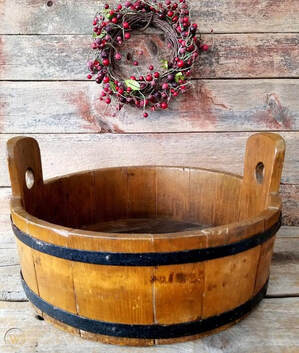Kit, Kit Kat
 The word kit, meaning a round wooden tub, first appeared in English in the late 13th century, perhaps from Middle Dutch kitte (jug, tankard, wooden container). The origins of kit and kitte are unknown.
The word kit, meaning a round wooden tub, first appeared in English in the late 13th century, perhaps from Middle Dutch kitte (jug, tankard, wooden container). The origins of kit and kitte are unknown.Gradually, the word kit shifted in meaning from the container to the stuff in the container. For example, kit meaning a soldier’s personal effects is from 1785; kit meaning a workman’s tools is from 1851. The connotation of kit as container returned with terms such as ‘kit-bag’ (1898) and ‘tool kit’ (1908).
‘Drum kit’ is from 1929. Kit, meaning an article to be assembled by the buyer, is from the 1930s; e.g., a model airplane kit.
What about the term ‘kit and caboodle’ from 1870? Caboodle may come from Dutch boedel (bundle, property). The ‘whole kit and caboodle’ means both your bag and all its contents.
‘Kitty’? The pool (or bundle) of money in a card game: from American English, 1884.
‘Kit Kat’ chocolate? In late 18th century England, kit cats were mutton pies created by a pastry chef whose name, according to some sources, was Christopher, or Kit (a short version of Christopher), Catling. These pies were very popular at what became known as the Kit Cat (or Kit Kat) Club, the home of the Whig (liberal) political party of the time. The Rowntree family, members of the Club, trademarked the name in 1911 for one of their chocolate products. In 1937, the chocolate confection now known as Kit Kat was introduced.
Why is Kit Kat so popular in Japan? In Japanese, Kit Kat is translated as Kitto Katto which sounds like the Japanese phrase kitto katsu meaning, “You will surely win!” In brief, Kitto Katto represents good luck.
What about kitty-cats, kittens, and other young fur-bearing animals? That’s another story.
Reference: Online Etymological Dictionary, https://www.etymonline.com/
Published on October 22, 2022 12:00
No comments have been added yet.



